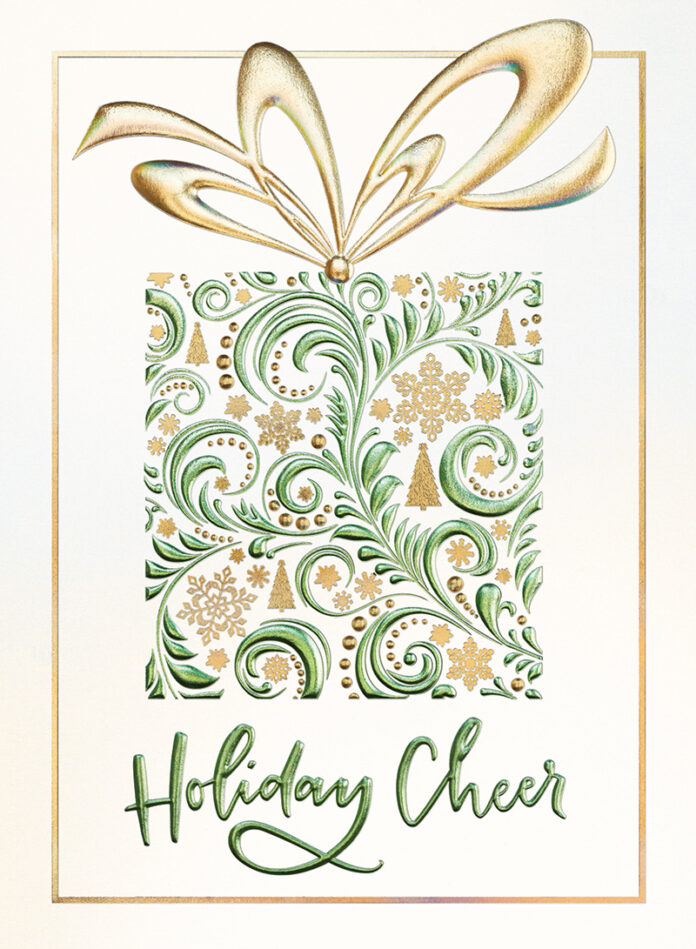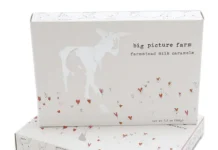By Hallie Forcinio, writer, PostPress
Holiday greeting cards are flooding the mail despite supply chain difficulties, postage costs and the expectation that delivery times may not be much better than in 2020. About three-fourths of consumers who send holiday cards do so because they know how good it feels when they receive a holiday greeting, according to a fact sheet from the Greeting Card Association (GCA).
Sending greeting cards is particularly popular with Millennials, the second-largest demographic of greeting card purchasers. Although Baby Boomers buy more cards, Millenials spend more per card (an average of $6).
Electronic greetings haven’t supplanted printed cards and account for a small percentage of overall greeting card sales, according to the GCA. Its research indicates eight out of 10 people agree that greeting cards cannot be replaced by social media and 60% say that receiving cards and letters in the mail “means more to me” than an email. Mailed messages evoke positive feelings with 65% of consumers observing that receiving a card in the mail lifts their spirits. With the added element of surprise, an unexpected greeting “just because” is especially treasured.
Posty Cards, a specialist in B2B products, reports minimal impact from digital competition. “In our business greeting cards niche, we didn’t see big migration to email in the first place,” reported Jane Coats, director of marketing at Posty Cards. She added, “We have heard anecdotes from customers who tried replacing printed cards with email and found that they got poor results. Good old-fashioned greeting cards are proving to be even more effective for personal contact in this digital age, especially when more people are working remotely and email security concerns are high. Most would agree that it feels much more personal to find a greeting card in the mailbox vs. a birthday email that’s likely to get flagged as spam anyway. Studies have shown that a real card is much more memorable.”
Special effects have wide appeal. Foiled finishes are among the top five greeting card trends identified in a blog by Designer Becca James, posted on February 18, 2021, on Printed.com, a digital printer of customized and customer-designed greeting cards, invitations and other products.
Coats agreed, noting “Foil designs on our greeting cards continue to be very popular and account for a significant portion of our sales. Business users from real estate agents to financial planners often select foil designs as a way to portray success and make a great impression on the recipient.” In fact, she said, “We are seeing more customers choose our premium designs that feature multiple foil embellishments on premium paper, such as metallic.”
Sustainable products
Sustainability is another trend in the greeting card industry. “In the last few years, we have seen more and more customers include sustainability as a part of their buying decision,” reported Coats. “And, we have experienced increased sales in our Sustainable Sentiments® line of recycled greeting cards, which includes environmentally inspired designs for users who want to portray concern for the environment. The company is FSC® certified, and products are printed with soy ink on recycled or FSC paper. Cards are packaged with recycled, recyclable materials.”
The company’s commitment to the environment goes beyond its products, however. “We recognize that using green materials is only part of the picture,” said Coats. “Therefore, our entire facility is certified at the highest level of sustainability for building design and operation — LEED Platinum. We also strive to continually improve the sustainability of our processes. We were one of the first print facilities to achieve SGP certification for our operation, and we are the first printer in the United States certified as a platinum-level TRUE® Zero Waste facility. In addition, 100% of our electricity is Green-e certified, with over 20% generated onsite via solar panels and the balance offset with renewable wind power.”
In the United Kingdom, UK Greetings (UKG), a part of the American Greetings family, is taking similar actions. It recently announced all its cards will be offset through the World Land Trust’s Carbon Balanced Paper program. The move will offset nearly 10,000 metric tons of carbon dioxide equivalents associated with the production of the board it uses for the 200 million cards it produces each year.
“UKG is committed to reducing our impacts in every aspect of our business,” said Chris Shaw, head of sustainability at UKG. He explained, “Since 2019, we have removed over 250 metric tons of single-use plastic from our cards and reduced our carbon footprint by 400 metric tons simply by improving our energy efficiency. With paper being our primary raw material, we work closely with our suppliers to help ensure that every single card and paper product can be physically traced back to sustainably managed forests. Choosing Carbon Balanced Paper was, therefore, a natural next step in our sustainability journey.”
By choosing Carbon Balanced Paper, UK Greetings will fund the protection of 635 acres of threatened habitat in the Khe Nuoc Trong region of Vietnam, a remnant of biodiverse tropical forest in a land blighted by deforestation. The area provides a sanctuary for a rich array of threatened wildlife, including one of the world’s rarest large mammals, a bovine, known as a saola, or “Asian unicorn,” as well as Critically Endangered species like the Sunda pangolin (a scaled anteater) and the red-shanked douc langur, a species of monkey. “We are thrilled to support World Land Trust in their efforts to protect the world’s most biologically significant and threatened habitats,” concluded Shaw.
Supply chain challenges
Although Posty Cards expects business to return to pre-pandemic levels this year, Coats admitted that staying ahead of supply chain issues has been a challenge. Lead times on paper have increased dramatically, and material and delivery costs are rising. “So far,” she said, “delivery of our products has not been impacted.” However, even if deliveries can be made on time, rising costs “could force future price increases.”





